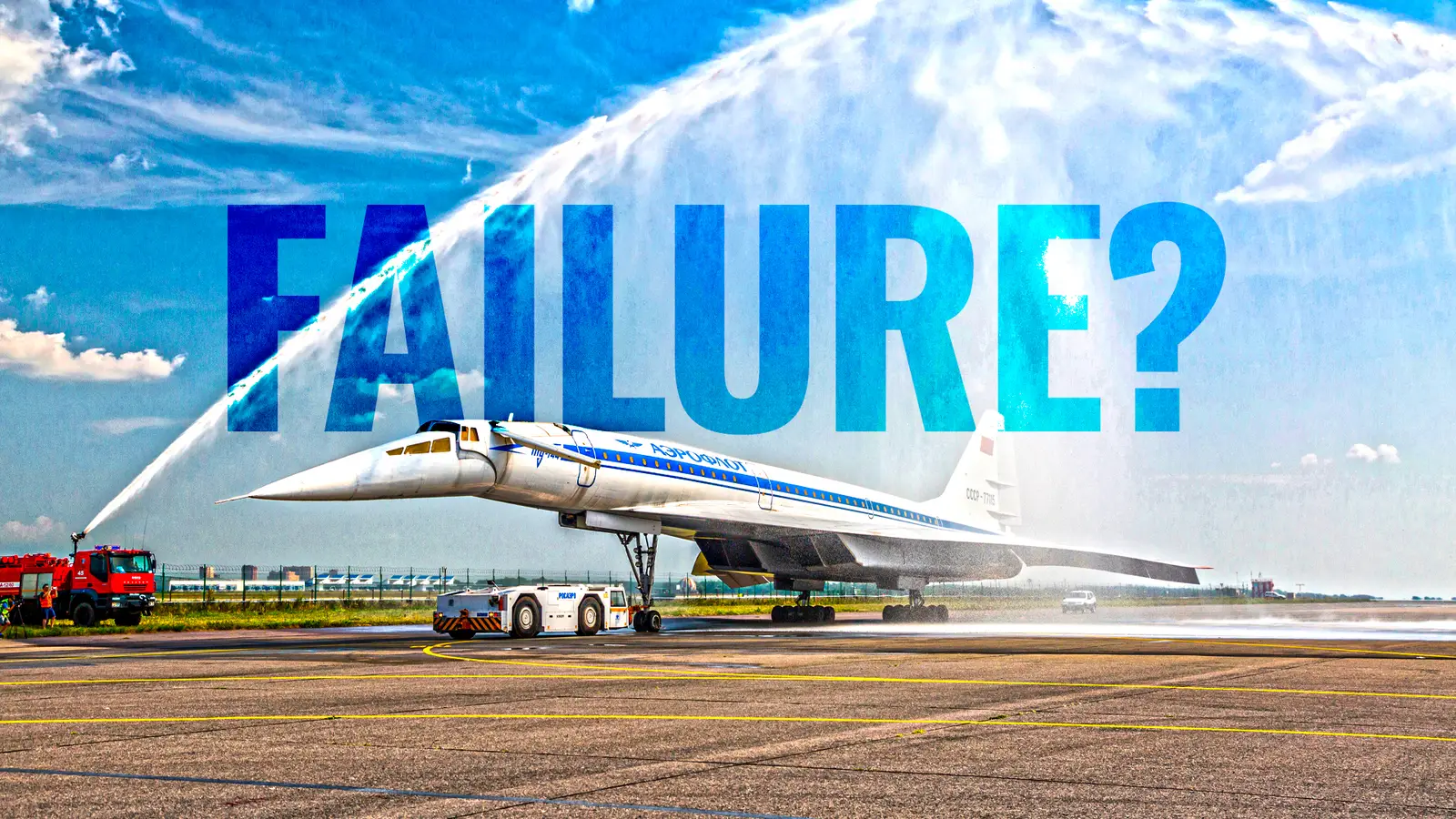Copyright Simple Flying

There is ample evidence of Soviet industrial espionage in the 1960s and 1970s, with the KGB specifically targeting the Anglo-French Concorde program. Networks of informants, typically mid-level engineers, clerks, or suppliers, embedded are described in declassified files and memoirs from both Western counter-intelligence professionals and former Soviet spies. Data from wind tunnels, stress analysis reports, material specifications, and progress summaries were all smuggled out by these networks. Due to the fact that Concorde was a collaborative Anglo-French project, many design documents were shared among several subcontractors, providing spies with various entry points. However, the information that made it to Moscow was frequently incomplete, out-of-date, and occasionally deceptive, either because the spies misinterpreted what they copied or because the security agencies in the West purposefully allowed "poisoned" documents to slip. Both the strengths and the limitations of Cold War espionage are demonstrated by the "Concordski" story: The profound, iterative engineering required to transform a prototype into a safe, commercially successful airplane cannot be replaced by stolen ideas, but it can speed up a program. The Case Against Tupolev The Tu-144 and Concorde undoubtedly resemble each other aerodynamically, although most experts see this closeness as the unavoidable result of physics rather than evidence of widespread copying. In the late 1960s, a narrow fuselage and a thin, sharply swept delta wing of roughly sixty degrees were the only options available to an engineer who desired a forty-to one-hundred-seat aircraft to cruise economically at Mach 2. The open scientific literature on delta-wing shock-wave behavior, publicly available American research, and the lessons learned from military experiments like the Soviet Sukhoi T-4 and the American B-58 were all available to both design teams. Convergent development toward a comparable silhouette was nearly certain given those shared limitations and inputs. The Tu-144's small retractable canard foreplanes, which were installed after 1971, are the most noticeable external difference. This indicates that Tupolev's bureau was not just copying the shape of the Concorde but was also addressing its own low-speed handling issues in a manner that Airbus and BAC never adopted. In a propaganda ploy for the Soviet Union, the Tu-144's first flight on December 31, 1968, actually took place five weeks before Concorde's. However, the Soviet prototype started preliminary design approximately five years after work in Britain and France began, and it underwent much more difficult flight testing before being able to transport paying passengers. While the Tu-144 only operated a few postal flights in 1975 and didn't start carrying people until November 1977, the Concorde began commercial service in January 1976. The Tu-144's catastrophic 1978 accident over Gromov Flight Test Center and its crash at the 1973 Paris Air Show highlight how narrow the distinction between achievement and disaster may be. While detractors respond that the Tu-144's lengthy, accident-prone maturation reveals Tupolev's crew still had to address most difficulties on its own, proponents of the espionage theory contend that the earlier Soviet maiden flight represented knowledge shortcuts derived from stolen material. In Defense Of The Concordski The majority of contemporary historians reach a mixed conclusion. Tupolev engineers were undoubtedly given fragments of Concorde data by Soviet operatives, enough to confirm certain dimensions and possibly offer suggestions for intake design or center-of-gravity control. A parallel project that, from a distance, resembled its counterpart in the West yet differed greatly underneath surfaced. In a BBC special report, David Kaminski-Morrow of Flight Global, explained one of the leading perspectives on the case: “There is no doubt that Soviet thinking on the Tu-144 was heavily influenced by Concorde – the absence of a horizontal stabiliser [tail planes], for example, was a radical departure from previous Soviet designs. But other aspects, such as the engine configuration, were notably different. The Tu-144 also needed to be more rugged to cope with tougher operating conditions. Although espionage played a role in the Tu-144's development, the Soviets were still capable of exploring their own avenues to solve the multitude of technical problems thrown up by the project. The result was an aircraft which broadly resembled Concorde but which differed substantially in refinement and detail.” The Tu-144 relied on less sophisticated alloys and traditional riveted construction, which led to more severe thermal expansion patterns and more structural inspections, whereas the Concorde's aluminum-copper alloys, which were machined to incredibly fine tolerances, allowed its skin to "creep" under heat without buckling. In order to enable speeds of up to Mach 2.2, the Tu-144 also employed more heat-resistant materials (roughly 15% titanium by weight). Increased fuel consumption and mechanical complexity were the results of this performance drive. Differences Under The Hood Concorde pilots had access to the world's first digital air data processors, fly-by-wire augmentation, and an inertial navigation system in the cockpit, whereas Tu-144 operators had to deal with primarily analogue instruments and a less sophisticated autopilot. If the Soviets had a complete, exploitable copy of the Concorde's blueprints, none of those differences would have been expected. Four Rolls-Royce/Snecma Olympus 593 turbojets with advanced variable-geometry intakes and electronic control boxes that maximized nozzle area and fuel flow were used in the Concorde. Initially powered by Kuznetsov NK-144s, the Tu-144 prototypes were later equipped with more potent Koliesov RD-36-51A engines, which burned fuel extraordinarily and needed much larger inlets. Its engines required afterburners to sustain supersonic cruise, demonstrating significantly less effective propulsion. Many of the Tu-144's systems were less sophisticated, but they were nonetheless inventive. The crude insulation of the cabin made it extremely noisy. The Soviet supersonic transport (SST) demonstrated that it was possible to attain Mach 2+ while also emphasizing the significance of improved engines and aerodynamics. Safety Record In Service Operating at the edge of the flight envelope raised significant safety and maintenance challenges for these aircraft. Concorde built a remarkable safety record over decades of service with the exception of one tragic accident on 25 July 2000 that shattered its reputation. 113 people lost their lives when an Air France Concorde crashed on takeoff owing to a fuel tank rupture caused by runway debris. This was the only fatal crash. Concorde's retirement in 2003 was directly impacted by the 2000 tragedy and the post-9/11 aviation economic collapse, even though the aircraft had an excellent safety record before this occurrence. The Tu-144's operational history was far more erratic. In addition to having two significant crashes (in 1973 and 1978), it frequently experienced technical issues, necessitating special inspection procedures before every flight. The Tu-144 was retired from passenger service early because of these reliability problems and safety concerns. Boom Supersonic Enters Boom's Overture leverages fifty years of advancements in technology since these two icons first flew. With a revised delta wing and a unique gull-wing profile suited for supercruise, it will be a quieter, cleaner replacement. The bulk of the airframe will be made of carbon-fiber composites, which offer a greater strength-to-weight ratio and are far more heat-resistant than aluminum from the 1960s. The modern composites provide exceptionally efficient airframes and aerodynamic shapes, as well as a long lifespan and reduced maintenance requirements for the aircraft. Overture’s four engines are being designed as medium-bypass turbofans to achieve supersonic thrust without afterburners, dramatically reducing exhaust noise and fuel burn. In Boom’s words, the goal is an airliner “faster, quieter, more affordable to build, and more fuel efficient” than what any past SST achieved. The Future Of Supersonic Travel The Concorde and the Tu-144, which demonstrated the possibilities and risks of traveling at supersonic speeds, left an enduring legacy in aviation. In particular, the Concorde became a symbol of aerospace prowess and set speed records in commercial flying. It proved that regular supersonic passenger service was possible during its 27-year existence. However, the Concorde's high fuel consumption and emissions were problematic during a time of rising oil prices and environmental awareness, and the sonic boom phenomenon led to restrictions on overland supersonic flights. Aerospace experts and enthusiasts are still motivated by the Concorde, despite the fact that it was a project ahead of its time and entered service during a period that could not fully sustain it economically or environmentally. The Tu‑144’s legacy is more complex, as the world’s first SST to fly (beating Concorde to Mach 1 by a few months in 1969), it demonstrated the Soviet Union’s ability to compete in advanced aerospace technology and earned the nickname “Concordski” due to its resemblance to Concorde. While the Tu‑144’s commercial life was brief, the program provided valuable data (later even used in joint US–Russian research). Nevertheless, the Tu‑144 remains a cautionary tale about the risks of pushing a complex, unproven design to meet political goals without sufficient testing. Boom Supersonic aims to continue where Concorde left off, but with the advantages of contemporary technology and a modified aviation environment. A new era of more accessible and sustainable high-speed travel will begin if Overture is successful in bringing back supersonic flights for airlines. Although there are still significant obstacles to overcome (such as obtaining regulatory approval to fly supersonically over land), Boom's efforts indicate that the constraints that caused the Concorde to be grounded may eventually be resolved. The world might soon shrink once more thanks to the next generation of supersonic jets, but this time it would be sustainable and economically feasible.



